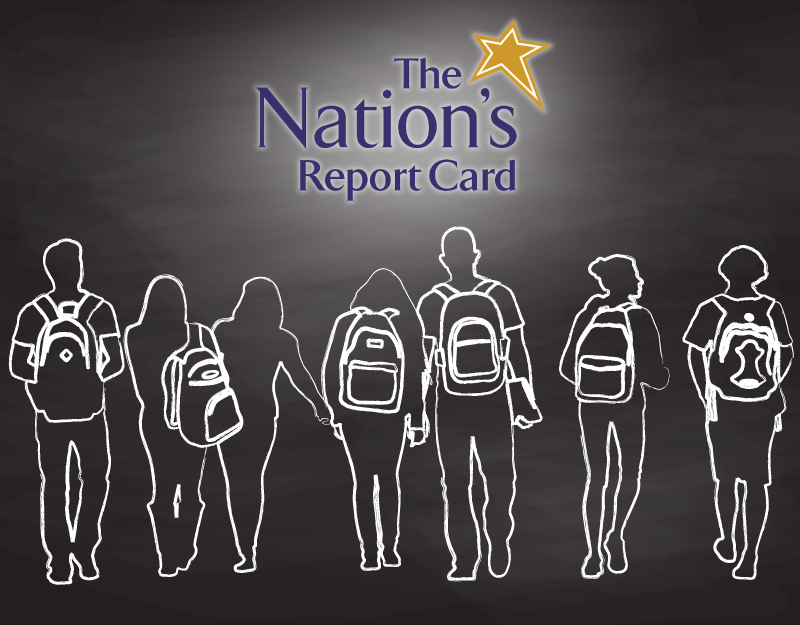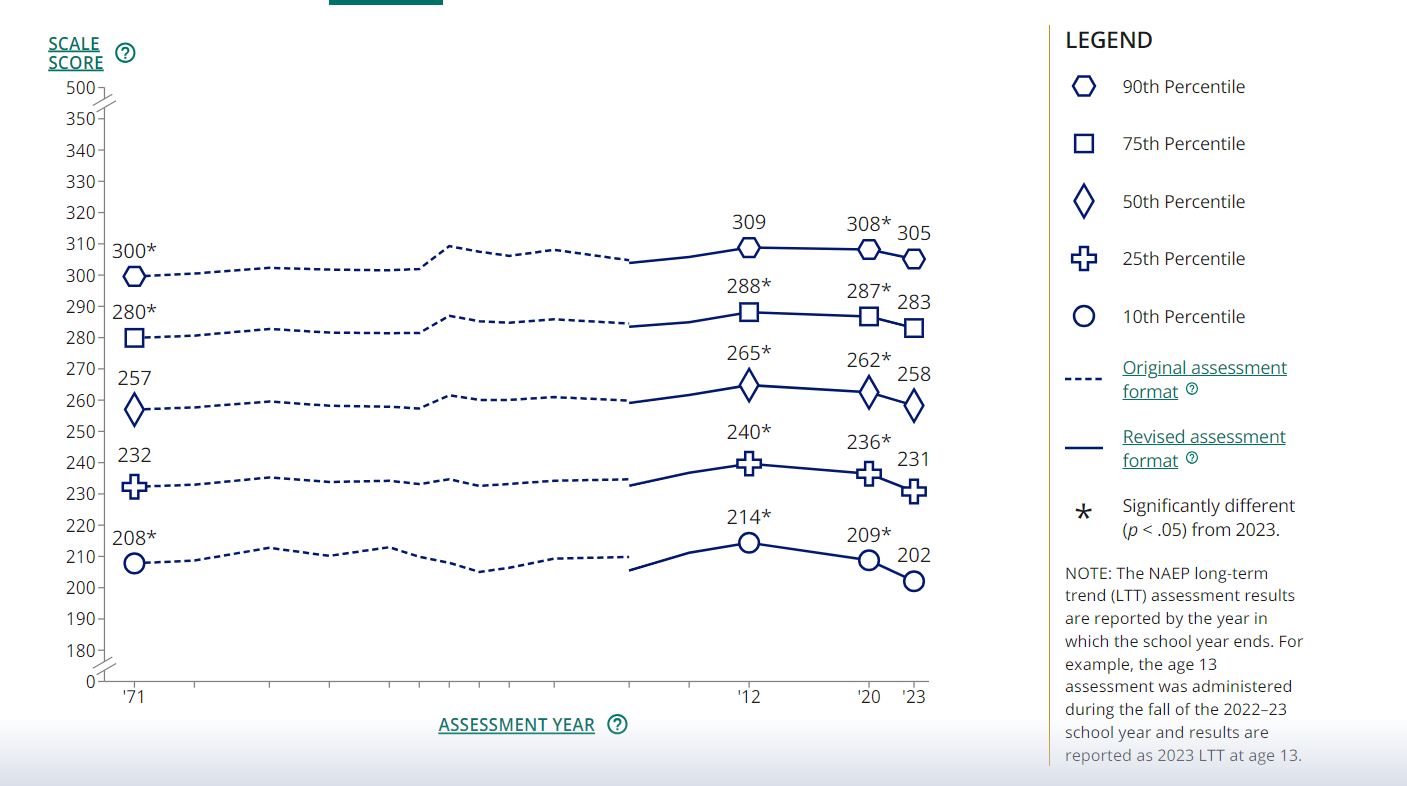NAEP Long-Term Trend Results Show Drop in Reading, Math Scores for 13-Year-Olds
The Nation's Report Card shows scores on the reading and math assessments of 13-year-olds dropped four and seven points, respectively, compared to 2020.

The latest report from the National Assessment of Educational Progress (NAEP) is out and it is not good news.
The Nation's Report Card released the Long-Term Trend Results for 13-year-olds in reading and math, and scores dropped four and seven points, respectively, compared to 2020. Looking back to results from 10 years ago, the decline was seven points in reading and 14 in math.

While the drop was largest for the lowest performing students (10th percentile) at seven points, all percentiles had lower reading scores since 2020.

Lower reading scores were seen across race and ethnicity as well, with the largest drop coming in students of two or more races at eight points.
The assessment asked students about their reading habits: specifically, did they read for fun and how often. In 2023, fourteen percent of students reported reading for fun almost every day. That is three points lower than 2020 and 13 points lower than 2012. Overall, the percentage of 13-year-old students who reported reading for fun almost every day was lower in 2023 than in all previous assessment years.
The average reading score in 2023 for those students who reported reading for fun on their own almost every day was 275, which was higher than the scores for students who reported other levels of frequency for reading on their own time; it has an impact on academic achievement in the assessments.
According to the report, "Fifty-one percent of 13-year-old students scoring at or above the 75th percentile in 2023 reported that they read for fun on their own time at least once a week, whereas 28 percent of 13-year-old students scoring below the 25th percentile reported doing so. The percentage of students who reported reading for fun on their own time once or twice a month was also larger for students at or above the 75th percentile. Conversely, the percentages of students who reported reading less frequently—a few times a year or never or hardly ever—were larger for students performing below the 25th percentile."
The reading assessment has been administered since 1971. According to NAEP, students were making progress until 2012, when scores began to decline. Those numbers took a "sharp downturn" during the pandemic. The average score in reading is one point above where it was in 1971. For math, despite the decline, 2023 scores are five points higher than in 1973 when math assessments began.
* Graphs from NAEP
Read the full NAEP press release below.
|
RELATED
The job outlook in 2030: Librarians will be in demand
The job outlook in 2030: Librarians will be in demand
ALREADY A SUBSCRIBER? LOG IN
We are currently offering this content for free. Sign up now to activate your personal profile, where you can save articles for future viewing






Add Comment :-
Be the first reader to comment.
Comment Policy:
Comment should not be empty !!!